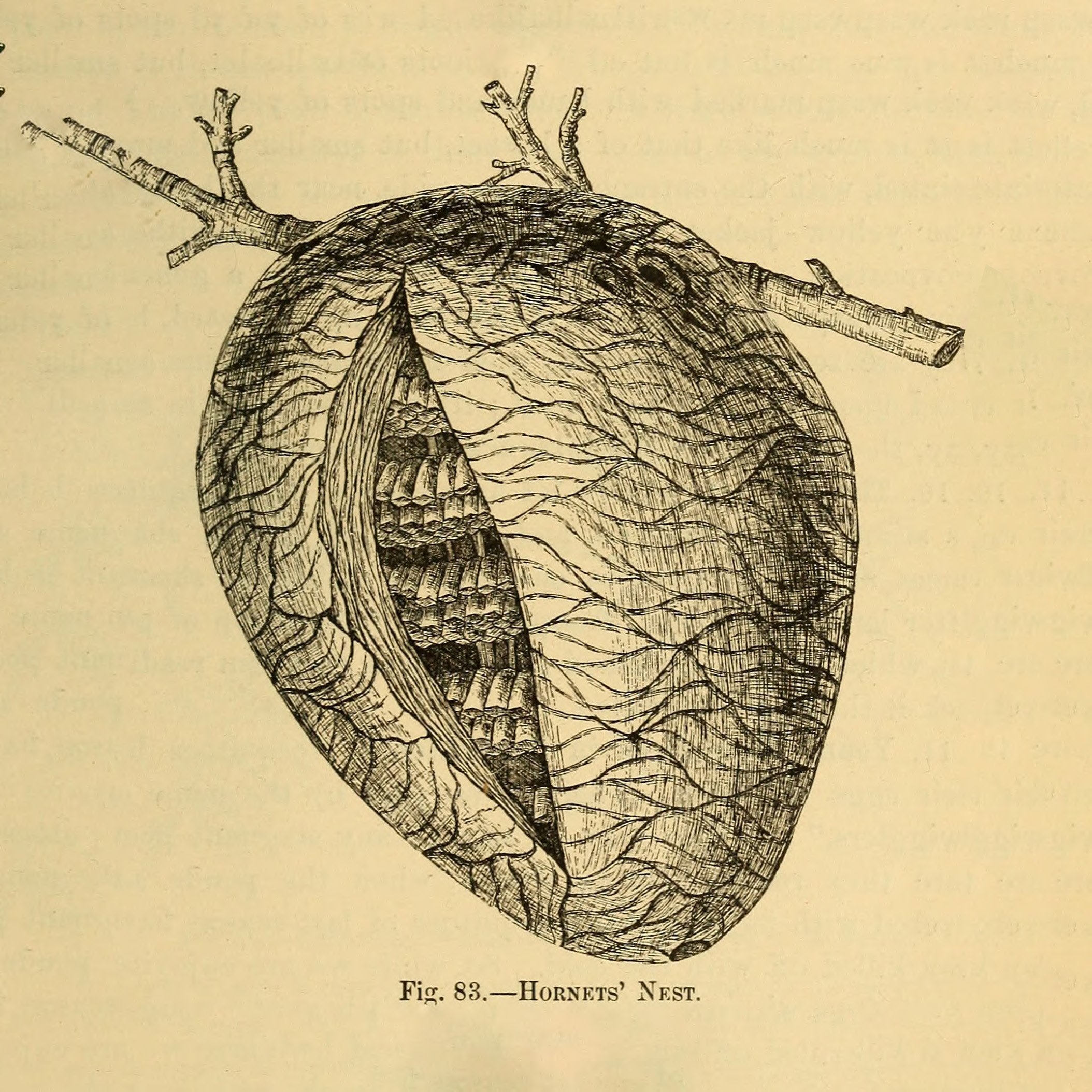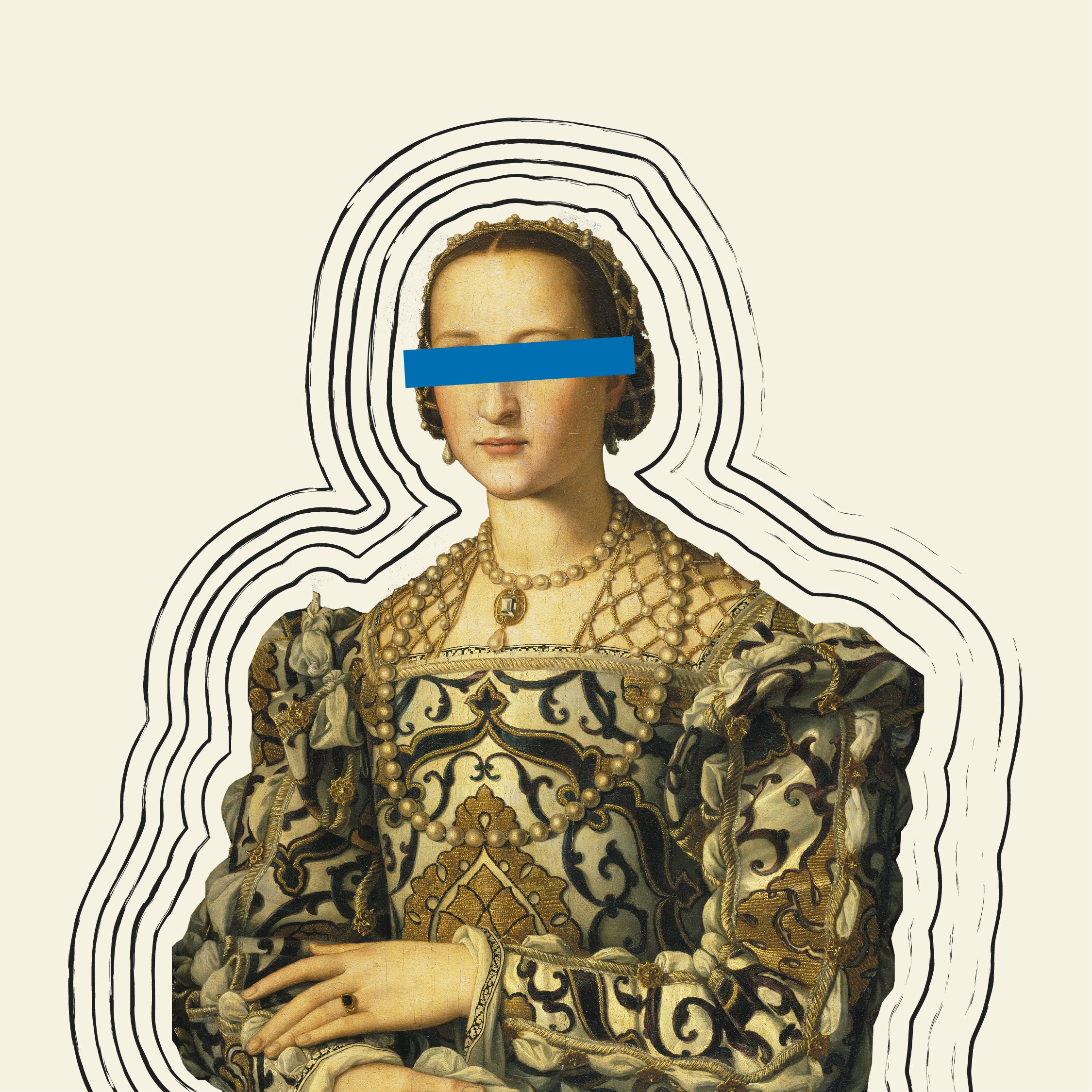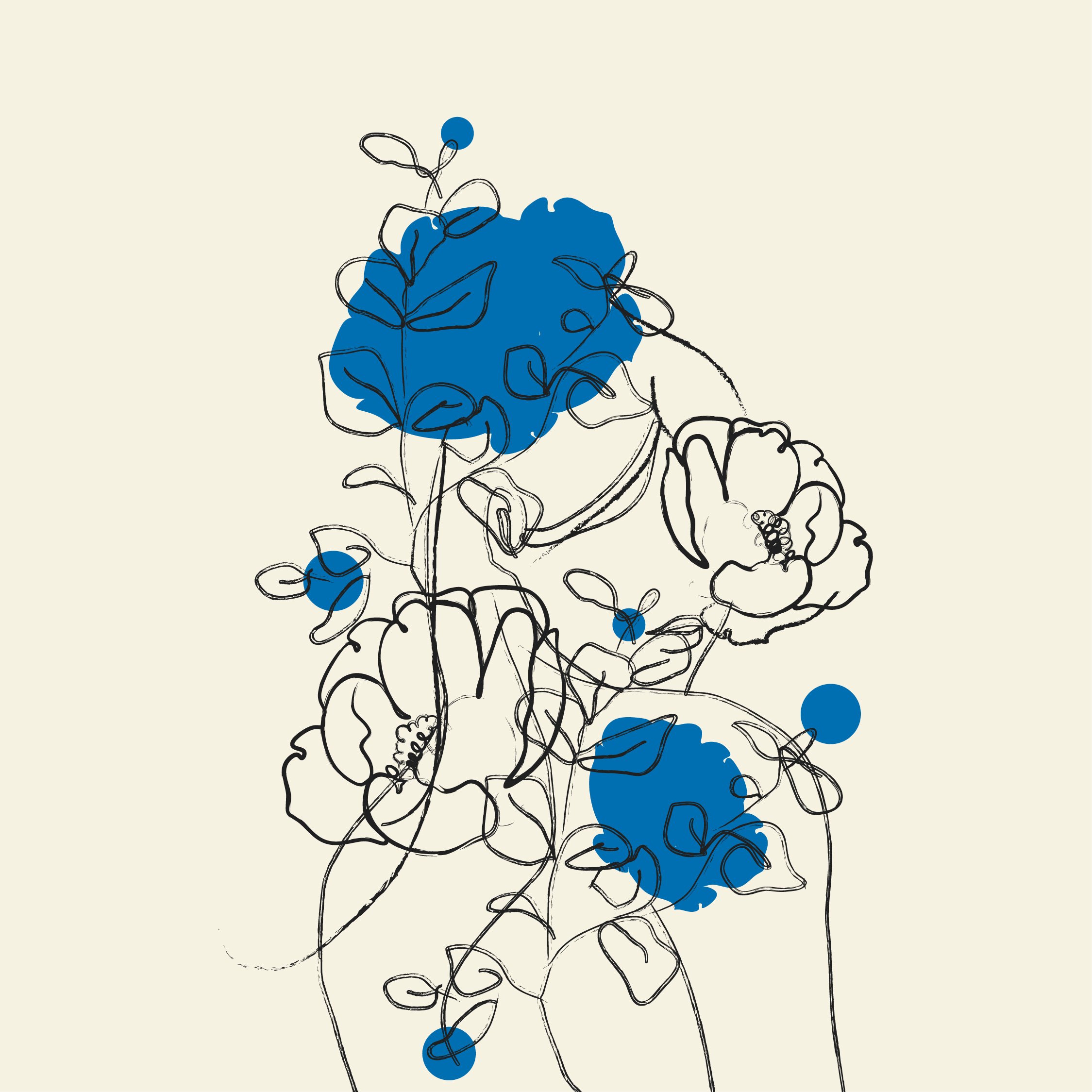Flowers
“Neither the strange currents of love nor water on the verge of thirst — nothing in this world can compare to the pleasure offered by observing this flower.”
AUGUST 22, 2024
Ballerina Flower
She is yellow and very dishevelled. Four tendrils emerge from her stem. She opens in mid-summer, at dawn with the sun. Her slender round petals are born in tiny pushes, and hang down. She gives off a perfume which combines the smell of woods — that is, dry — and mown grass — that is, damp. Once she has unfurled all her splendour, the tendrils spread, wrap round the nearest branches: they become as taut as wires. Captive, the flower begins the exhausting work of freeing herself. She slowly folds in on herself with little shakes, right and left. Forwards, backwards. She tries, but when after a great deal of patience and grief she has only managed to become more entangled, she abandons her efforts. Begins to move in the opposite direction: she unfurls her dishevelled self, petals extended. When the impulse fades, she coils once more with an indomitable will, and just as rapidly uncoils, without knowing why. This struggle lasts for hours, and does not end until the stem breaks off at the tendrils and the flower droops. If some kindly soul passes by and notices this struggle starting — and has a pair of scissors with them — they cut the tendrils so that the flower can live in peace. If the passer-by is cruel, they leave things as they are, and even enjoy the spectacle.
Desperate Flower
Lives in marshes. With her root in the mud — she is of the nenuphar family — she would open prettily were it not for the centipede Xuribinga-Palangrin, which is born beneath the flower’s calyx. Black, its feet mandarin-coloured, it lives in fear. Always with the fear that the Salamandril will appear. As soon as the centipede hears it approaching from afar — swooping down from the azure sky and the trembling light with the buzz of a blowfly — XuribingaPalangrin climbs the flower, squeezes her to prevent her opening, and if she is already half-open, forces her petals to close. A way of killing so as not to die. If the Salamandril gets to taste the flower, it lights up like a torch, attacks Xuribinga-Palangrin, and swallows it whole. Luckily the Salamandril has a trusting heart and is very innocent. If when it flies down it finds the flower closed and with Xuribinga-Palangrin on top, the Salamandril returns to the azure and the trembling light. It soon dies, dry as a nail. And so does the flower. Dead before she can open, the victim of the fight for life of a poor stupid idiot.
Blue Flower
She is white and she is blue. That is, she is as white as a white rose, and suddenly turns blue. Apparently she is dyed by an insect, but no one knows how it does this. A moment’s distraction, and she is blue. On one knee, sewn on with a thread of slime, the insect carries a small package, and inside this package, surrounded by eggs and by blue — pure induline — lies her mate. He sleeps all day and incubates the eggs, which fall into the package through a hole the insect has on its knee. When the time comes, the insect crawls into the very heart of the flower, drops the package, and the flower turns from white to blue, from top to bottom. They say — Oh, it’s because her mate, when he sees himself wrapped in the flower, bursts the package and everything is flooded with blue juice — then the eggs appear, and soon the tiny insects fly off, each of them with a package on their knee. Be that as it may. But these are pure suppositions. The truth is that in the blink of an eye the white flower turns blue. How exactly? There’s no way of knowing, and everyone is a little puzzled.
Magic Flower
Don’t go! The Wood of Shattered Mirrors is a wood of pepper plants with leaves stained with evil. Every so often the wood is crossed by a cloud of white flies in a compact, drowsy flight. Don’t go! The ground beneath the trees is littered with broken mirrors. As soon as you enter you go deaf. Don’t go! Inside a hollow trunk lives the Magic Flower, surrounded by the eggs of the Bomb Ant, legs of the Violin Beetle, tears of the Face of Man. Mistress of her lair that is rotten with mushrooms and moss, she moves like flower and flame. A speck of dust ignites the grass and death comes from everything already dead. Each fragment of mirror is a fragment of life of each of the men who have left all they had in the wood. In each shard of mirror a fragment of those lives pulses brilliant, ardent, shimmering: three lines of rainwater, an undone collar, a hand still moving, part of a child, a handful of a doll’s hair . . . In the shade of the green light, as you are trying to tie a fragment of life to its corresponding fragment of mirror, something stirs among the leaves . . . Bang! It has exploded on you, and before you hit the ground in pieces, your back is already covered with quicksilver. To act as a lure.
Red Flower
She is nailed to the branch, with no neck. Lit by a painful red, when the breeze turns to blow on her, the edges of her petals tremble. And at night, when the grass is cold and snakes drink milk, on every taut petal appears a drop of black blood: smooth and hard like the seeds of a watermelon. Damp. It’s the sickness. Better not touch her. The sickness burns the flower and a shower of rain rots the sickness. Glow-worms, who are wise, light their lanterns. And look on.
Dead Flower
Somewhere in the world the Dead Flower is to be found. Covered in salt stars, time has dried her out, tall and empty, her leaves extended. A crazy springtime blew a seed on her, and the seed produced a plant, and the plant flowered with wretched flowers — a golden snowdrop, a honeyed foxglove or a yellow monkey flower, all of them consumed in the end by the salt stars. In the jumble of her roots the earth is grey, mixed with sand and pierced shells. From one leaf to another, the rain spider spins her web, weaving and weaving, night and day, tripping in the creases, yarning over, three stitches to the left, now a back loop, now a front loop, if the wind tangles it, I start again, and to make it thick I weave and weave, turn around, three chain stitches, it comes apart up above, has to be tied, I smooth out the sheet . . . I weave the blanket and wait, mouth watering, for the blind moth with honeycomb wings that comes flying by . . . The Dead Flower does not know when the spider is at work or when the little stars fall or come together. Nor does she know, shrouded in the spider web, that the wild sea is watching over her, and sprinkling her with salt.
Happiness Flower
In a far-off land grows a wraithlike purple tree. It produces a flower as shiny as glass, rainbow-hued like glass, made of something very similar to a soap bubble. Neither the strange currents of love nor water on the verge of thirst – nothing in this world can compare to the pleasure offered by observing this flower, or to the moment when the setting sun makes her sing. She has to be looked at lying flat on the ground. Sometimes there are as many as ten people lying there, waiting with morbid desire, eyes frozen, for the flower to sing. The days are too white, the nights too dark . . . the sloping meadow ends in a cliff on the shore of a gulf. The flower sings and lulls them to sleep. Sleeping like stones, the men roll down and end up in the water where, after plummeting for 124 metres, they die open-mouthed, their teeth smashed. The fork-fish drills into their bodies and starts eating them from the inside.
Water Flower
She opens on the surface of the purest water in the world: that of the lakes, made from snow foam. She is small, ivorywhite, like lemon balm. A drinking flower. Her petals become spoons, scoop up the water, and when they are full, quickly close up to form a bud so that the water doesn’t spill, then they drink it. Afterwards they slowly open and rest. Once they are rested, they drink again. They do the same every night. When the blossom is over, the plant shrinks its stem and leaves its offspring, the flowers, alone with the water. All the benefit from so much drinking was for the plant. Nothing for the flowers. Only the hard work, a little coolness inside, and a blue cemetery.
Knight Flower
This flower is not a she. It’s a he. Just as carnations, jasmines, wallflowers and yellow poppies are masculine in Catalan. Not to mention the Valencian jasmine of King Peter the Great, ‘of big and wide flower.’ The Knight Flower is always alert. At war with the wind. The Knight Flower is purple, with a saffron-coloured pistil. He opens in spring and does not wither until chestnuts ripen. His mission is to play the trumpet. The Knight Flower lives on the top of walls and keeps a lookout. The wind wants to smell all the flowers, to spread their perfume, and the Knight Flower warns the others. When the wind arrives, it finds them under lock and key. It is a very subtle war: a war of cunning. The wind hides, suddenly appears, disguises itself as a breeze, blows gusts at three hundred an hour. The Knight Flower, dressed in ecclesiastical purple, lord of the high walls, hears the wind coming and with his pistil trumpet: toot toot! … toot toot! ‘Flowers shut!’ The flower joyously commands. ‘If you want to smell them, that’s too bad, I won’t let you strip their petals.'
Mean Flower
She is the colour of a mint sweet, full of different shades. She has one petal raised like a frill and two horizontal ones that emerge like two mussel shells, closed by a tuberous latch. This is a flower-mussel with a heraldic crest and a latch. If you stop to look at her, the crest waves angrily, the latch lifts up, the flower-mussel opens, and pokes out a little tongue as dark as chocolate, shiny as varnish. Furious at seeing a head on top of a man so close to her, she sticks out her tongue, mockingly.
Nameless Flower
As soon as she was born she loved everything: the piled-up aphid, the hidden worms sucking and sucking the damp earth, the lizard’s tail, the rage of the bumblebee, the ants shooting out with a bundle on their head, the pelleted cockroach, the ladybird with a shell-jacket, the dragonfly about to wash its face, the dusty rain of the syringe flower. Everything. Every day she loved everything. Until the end of the long fine days brought the red wind, and the wind shook her violently and went off with one of her leaves. And another. And more. And she, in her tiny quiet voice, said to she didn’t know whom: they are taking me away. Each flying leaf was a letter. T.H.E.Y. . . . the pause was a dot . . . T.A.K.I.N.G. . . . And no one heard her and the leaves rose and rose and, blowing hard, the wind jumbled them and that was that A.W.A.
This is an excerpt from Journeys and Flowers, which will be published by Daunt Books in October 2024.



